Affiliate links on Android Authority may earn us a commission. Learn more.
Xiaomi Mi 10 Pro review: Delivering the goods
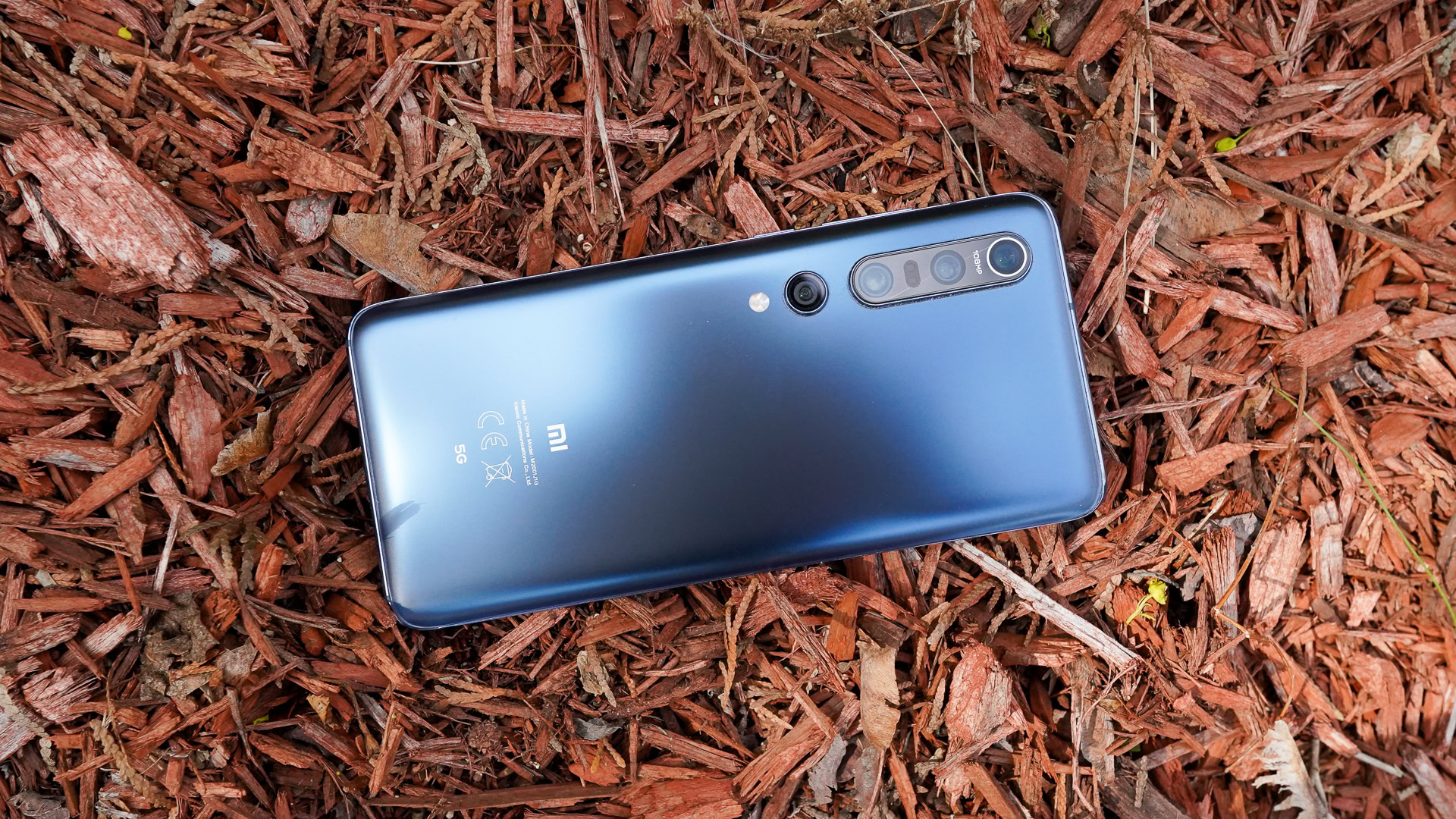
Xiaomi has long had a knack for knocking out solid hardware, and the Mi 10 Pro sees the company doubling down on its dashing design language. The phone isn’t just a glass beauty, it’s a technical powerhouse. The Xiaomi Mi 10 Pro goes head-to-head with some of the best phones in the world, including entries from Oppo, Huawei, and Samsung.
Did Xiaomi dial in the right mix of bravado, proficiency, and pricing? Find out in Android Authority‘s Xiaomi Mi 10 Pro review.
Xiaomi Mi 10 Pro review: Who is this phone for?
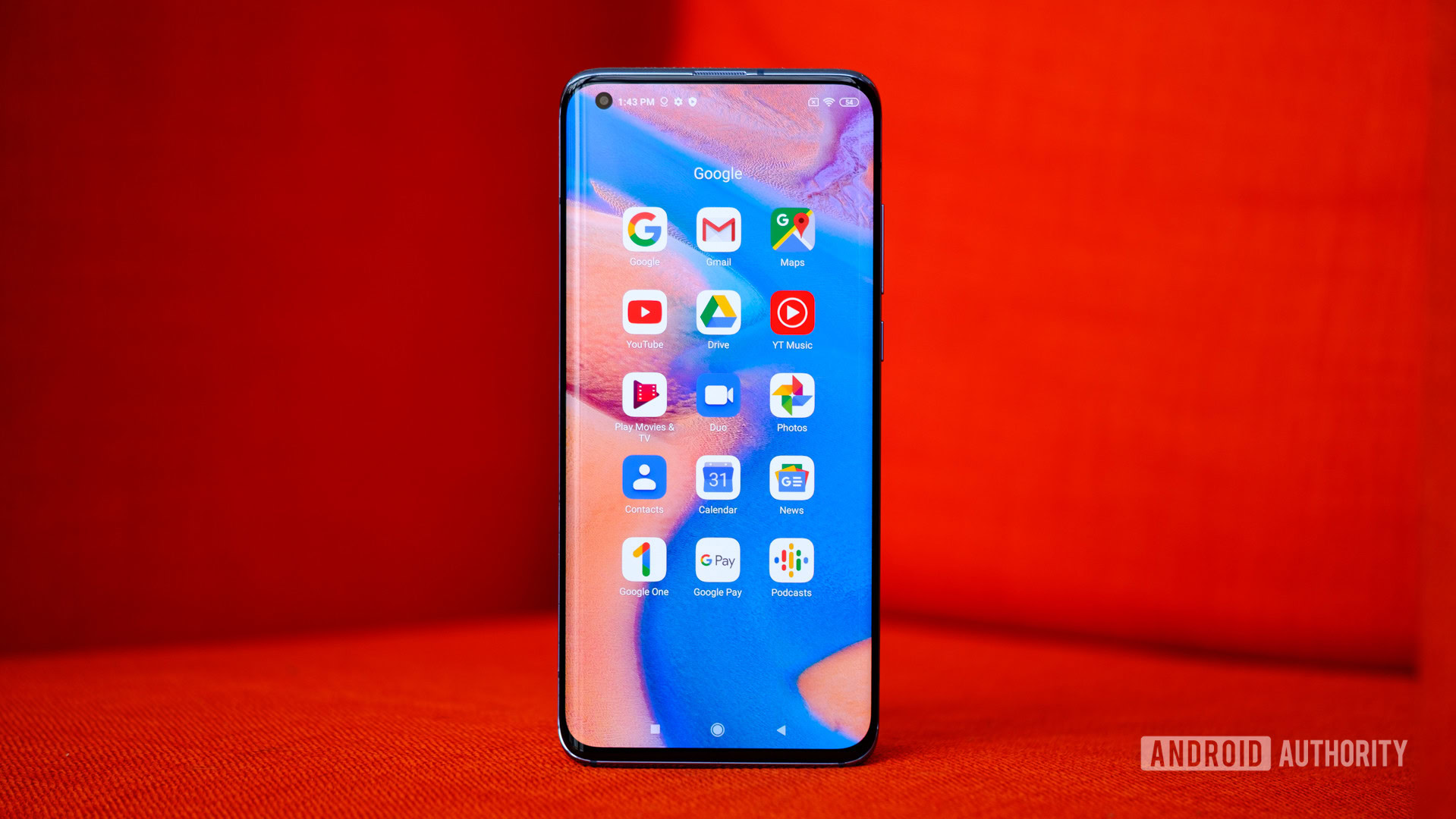
The Mi 10 Pro is a flagship phone that competes with the OPPO Find X2, HUAWEI P40 Pro, and Samsung S20 family. It’s a heavy hitter designed to appeal to those who want the whole package: good looks and top performance. This isn’t an easy feat. It’s easy to get at least part of the equation right and still get the resulting solution wrong.
The Xiaomi Mi 10 Pro sees the company focusing on four major tentpoles: the display, processor performance, battery life, and the camera. If these are the core features that might get you to part with your cash, Xiaomi has them in spades.
There’s a bit of a change, however: the Mi 10 Pro costs a lot more than its predecessor — nearly twice as much — and is now in line with the competition on pricing. In other words, the phone has lost one of Xiaomi’s traditional advantages. Let’s dive in and see how the Mi 10 Pro earns its higher price tag — and whether or not it should earn your money.
Design: Slim simplicity
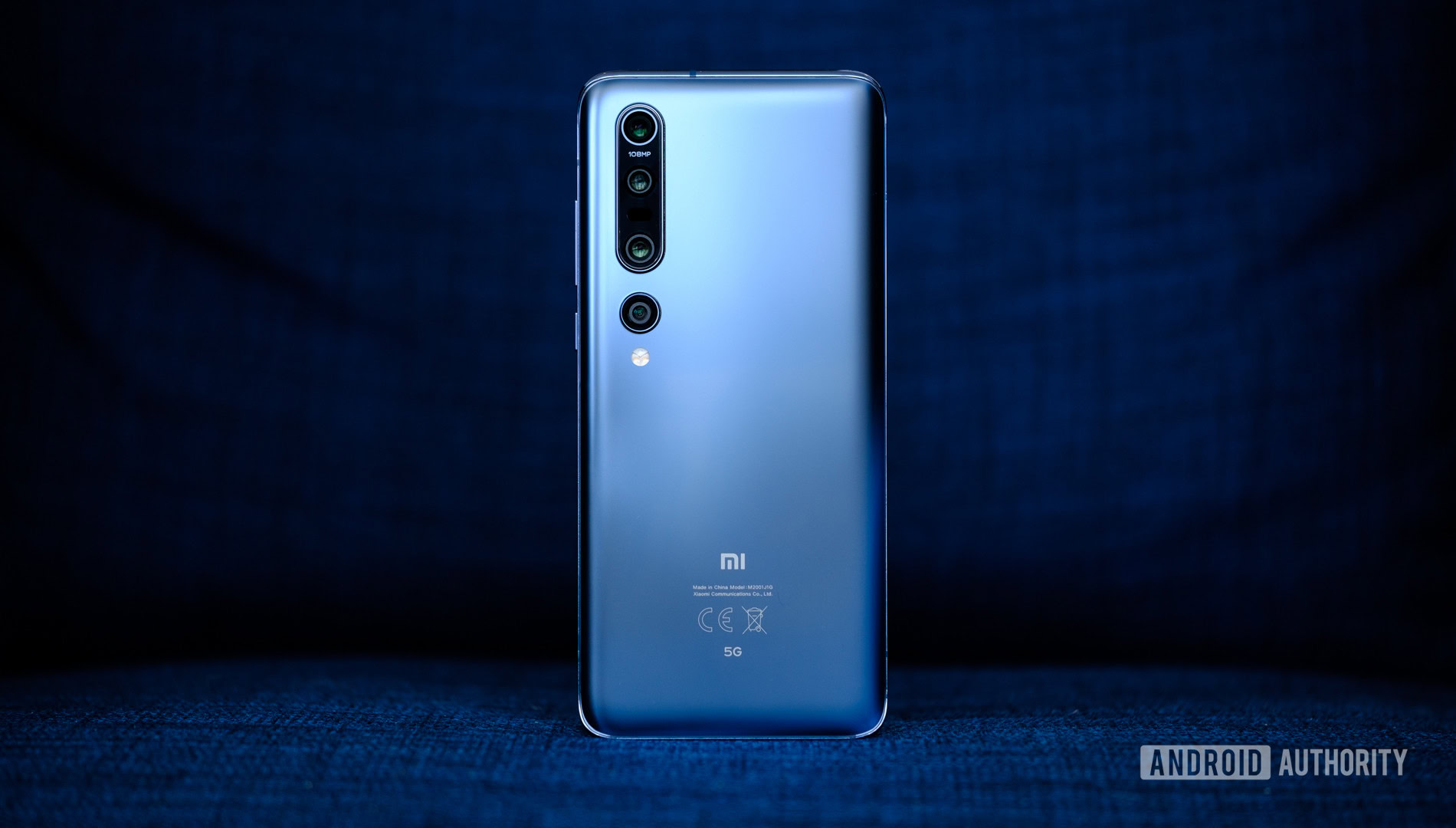
- 3D curved Corning Gorilla Glass 5
- 162.58 x 74.8 x 8.96mm
- 208g
- USB-C
- Alpine White, Solstice Grey
Xiaomi isn’t breaking any new ground in terms of design, and yet the Mi 10 Pro is appealing all the same. It is as refined a product as I’ve seen from Xiaomi.
The glass sandwich form should be familiar to anyone buying a flagship in 2020. A slim metal frame is the filling between two Gorilla Glass 5 panels that curve around the edges to meet the aluminum. The glass is flawless and creates an utterly seamless transition from glass to metal to glass as you move your finger around the edge. The fit and finish is second to none.
The phone comes in two colors: Alpine White or Solstice Grey. Xiaomi lent us the gray model, which resembles the sky at dusk right before a wicked snowstorm. It’s got a satiny finish, rather than gloss, which gives it an elegant, gentlemanly quality. The metal frame is shiny, but still painted to match the phone’s dark, cloudy mood.
Apart from the color, the camera module is the most striking design element on the phone’s rear panel. Rather than go with a bulky rectangle, Xiaomi lined up the Mi 10 Pro’s cameras in a vertical column. While three lenses are encompassed in the same raised module, the fourth lens is, inexplicably, an island unto itself. The effect? It looks like an exclamation point. A reflective chrome ring circles the top lens, calling out the phone’s high pixel count. The module, offset to the left, means the phone will wobble as you tap the screen while it sits on a hard surface.
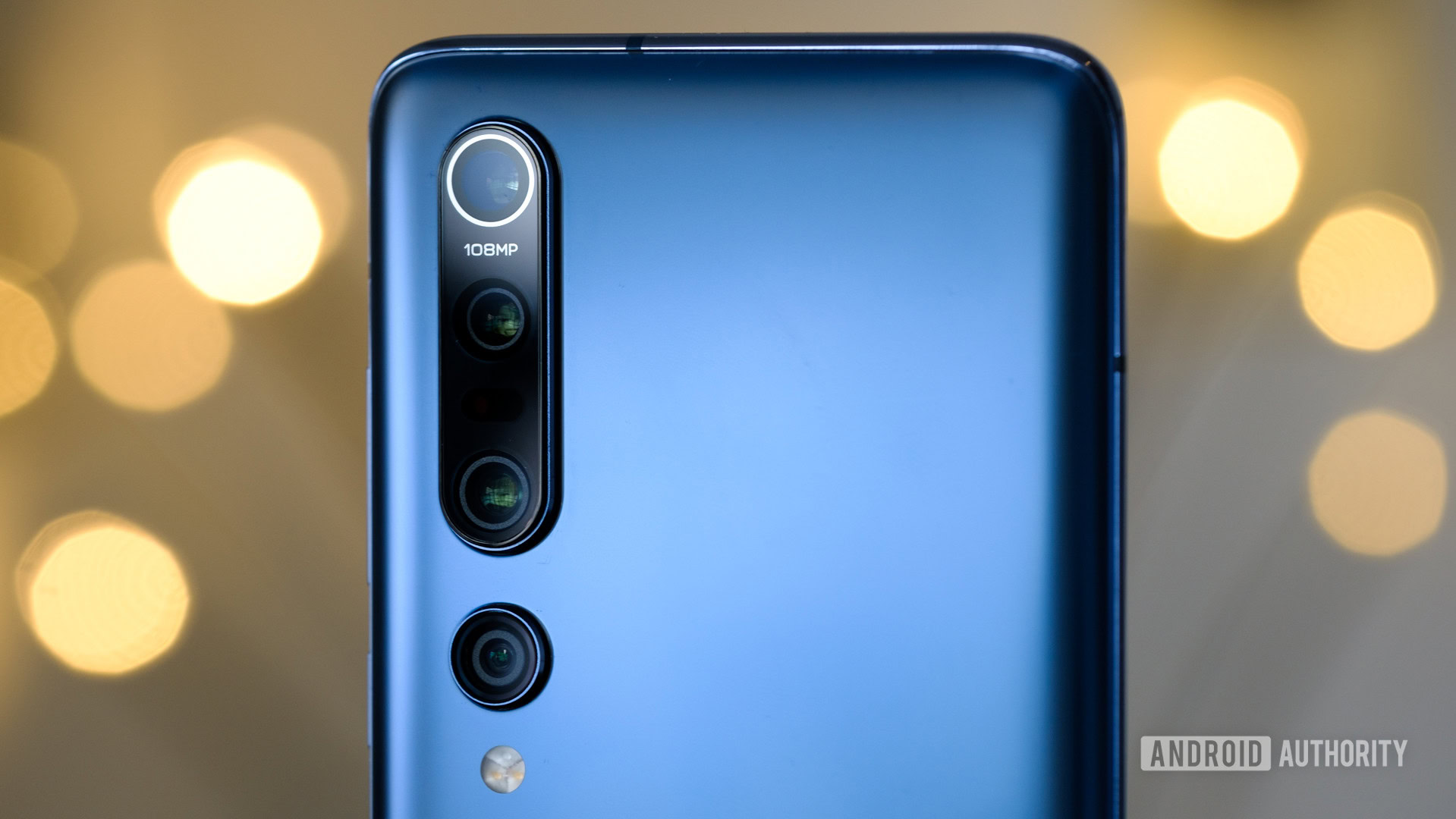
The controls are about what we’ve come to expect from flagships. That means USB-C but no headphone jack, a SIM card tray but no microSD, stereo speakers, and slim buttons on the side. The screen lock key and volume toggle, both on the right, are perhaps too slim. The action is good.
It’s not stupidly big. The Mi 10 Pro is about the same size as a Google Pixel 4 XL, and noticeably shorter and narrower than the LG V60. In other words, it is easier to hold and use than some flagships. It’s still sizable and may be too large for some people.
The Mi 10 Pro is as refined a product as I've seen from Xiaomi.
Xiaomi says it has “splash protection” but not a full IP rating. Nearly all of the Mi 10 Pro’s competitors (S20, V60, P40, Pixel 4, OnePlus 8 Pro) have IP68 ratings.
In all, the Mi 10 Pro may be simple, may be safe, but it’s polished in just the right ways.
Display: Encouraging screen time
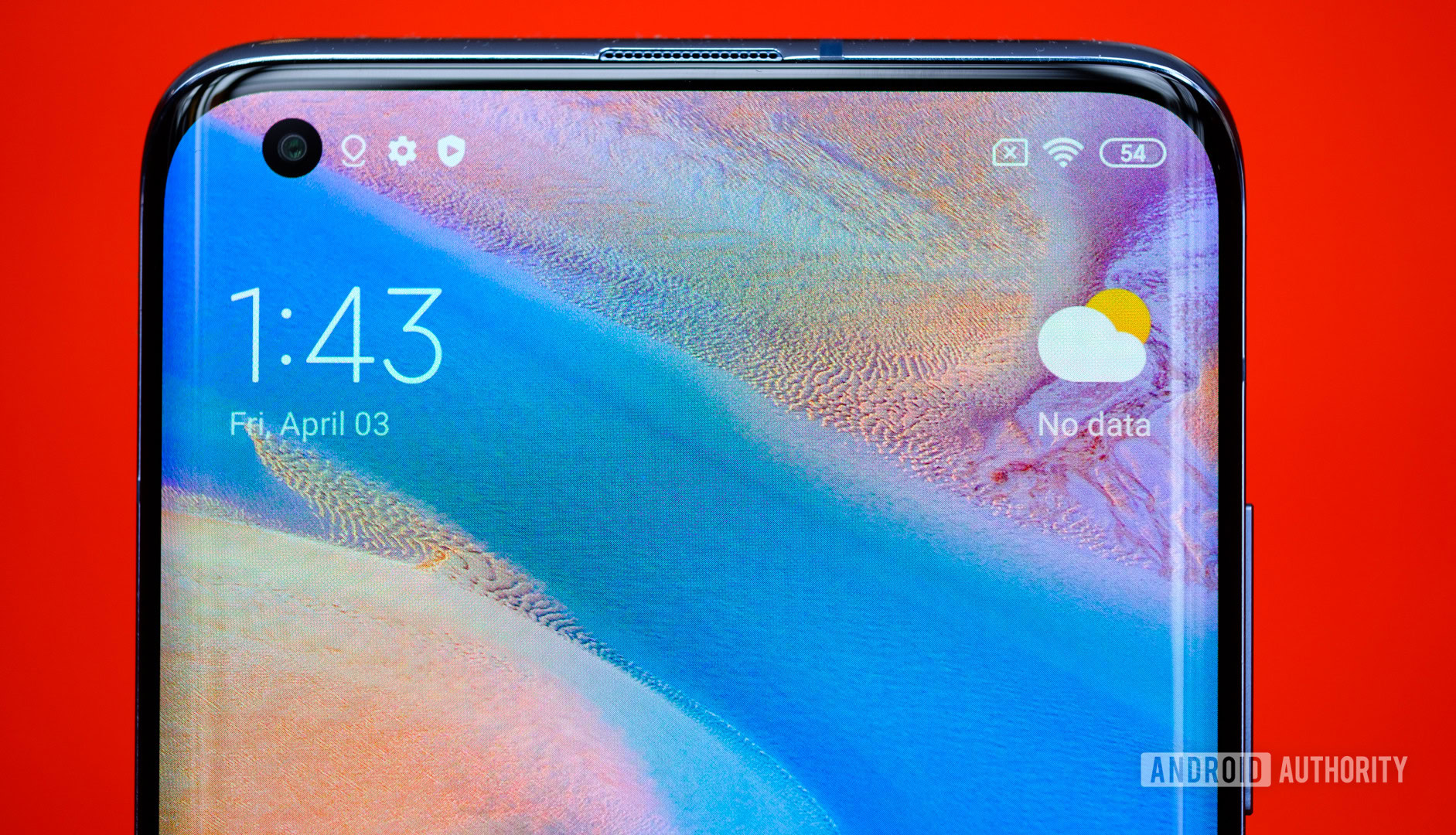
- 6.67-in AMOLED Dot Display with TrueColor
- 19.5:9 aspect ratio, 92.4% screen/body ratio
- 90Hz
- HDR10+ / TUV Rheinland certification
- Full HD+
- 800nits
- 5,ooo,ooo:1 contrast
- Under-display fingerprint reader
Xiaomi made the conservative choice with respect to the display. Whether or not it is enough is up to you. It’s a sizable 6.67-inch AMOLED that can be set to 90Hz if you want a smoother experience. The refresh rate isn’t as high as the 120Hz displays of the S20 series or the OnePlus 8 Pro, but it matches the rate of the HUAWEI P40 Pro and Google Pixel 4 XL. The Full HD+ resolution is dense enough for the panel, but I’d have preferred to have Quad HD+ as an option. Brightness ramps as high as 1,200nits under certain conditions. There’s no notch, but you’ll find a small punch hole camera in the top-left corner of the screen. The Dot Display branding is Xiaomi’s version of the Infinity-O branding from Samsung.
All this translates to a fine display. It’s pixel rich, bright, and colorful. Everyone should be happy to browse the web, scroll through social media, or punch out some emails on this screen. I really enjoyed the look and feel when set to 90Hz scrolling and other animated motions are smooth, smooth, smooth.
If you love to Netflix on the go, the HDR10+ certification means you get the best possible picture from the streaming service. The phone also has TUV Rheinland certification and a contrast ratio of 5,000,000:1. The most recent season of Ozark looked amazing on the screen.
Last, the phone has an under-the display fingerprint reader. It’s positioned about where you expect it to be. While I still prefer rear- or side-mounted readers, the Mi 10 Pro’s reader was acceptable in terms of speed and accuracy. The face unlock tool, which doesn’t rely on any fancy tech, is consistent but not as secure as 3D-based solutions.
Essentially, the Mi 10 Pro matches much of the competition when it comes to screen tech and performance.
Performance: Pow, bang, zoom
I have the POWA
- Qualcomm Snapdragon 865
- Adreno 650 GPU
- 8GB LPDDR5 RAM
- 256 UFS 3.0 storage
- LiquidCool 2.0 vapor chamber
The Mi 10 Pro has the expected silicon under the hood. That means Qualcomm’s top-of-the-line processor, with enough speedy RAM, storage, and cooling to keep most users happy. The Mi 10 Pro tore benchmarks such as Geekbench and 3DMark a new one, topping 99% of other phones in the database. It easily matched the numbers put up by other Snapdragon 865 flagships, such as the S20 Ultra and OPPO Find X2 Pro. I’ll call out the 3D Benchmark for one reason: it shows the refresh rate. It one test, the phone managed 88 frames per second and the other it dialed in the full 90. This demonstrates that the refresh rate is real.
In everyday use, the phone was a smooth operator. Nothing about the Mi 10 Pro ever felt slow or sluggish. Thanks to Google’s free offer of Stadia, I checked out some games on the Mi 10 Pro, including Destiny 2. The game ran perfectly. I didn’t see any dropped frames during gameplay. The Mi 10 Pro lacks dedicated gaming features — but it still delivers all the punch it needs.
Suffice it to say the phone is more than satisfactory when it comes to power.
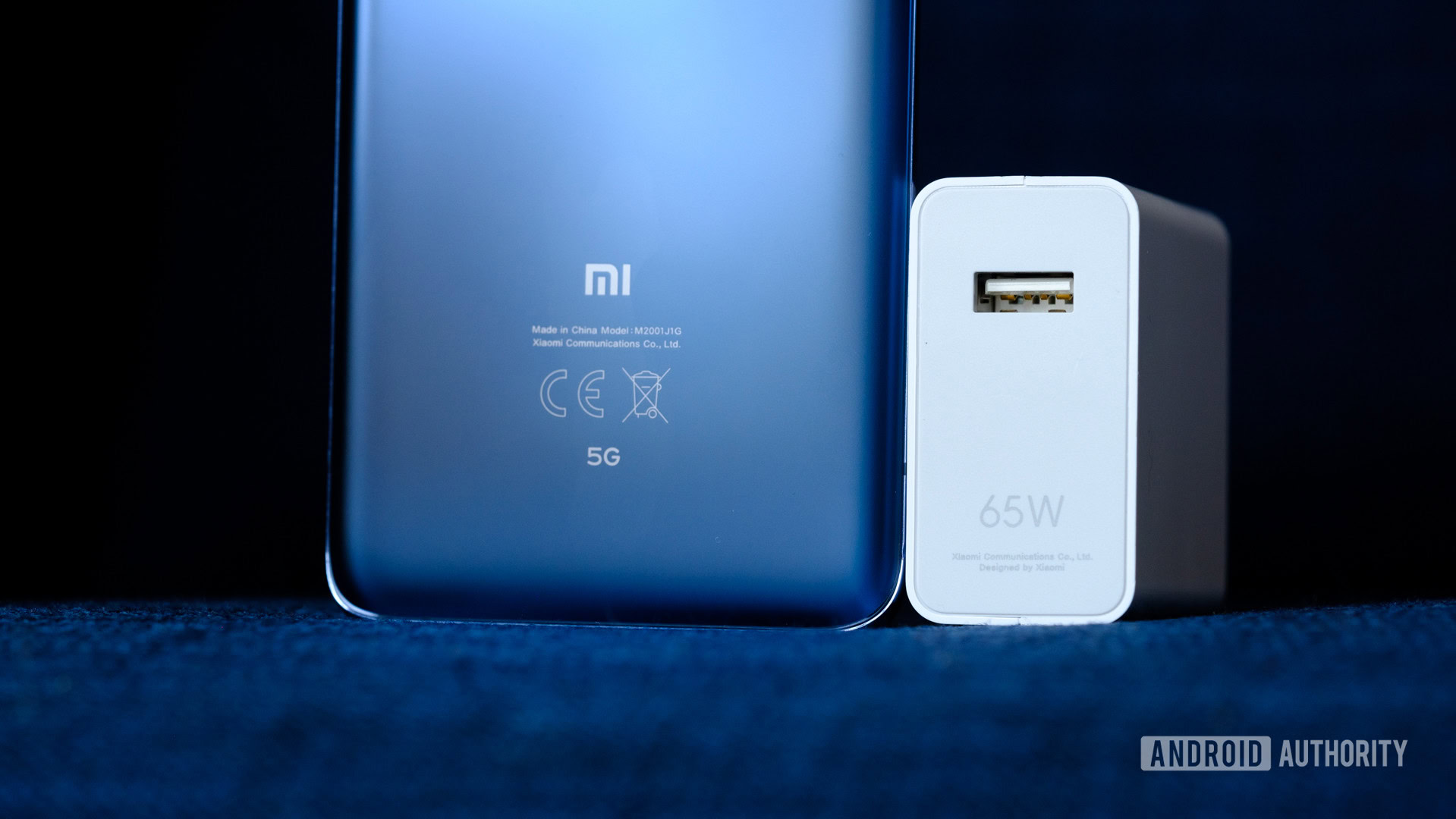
Gimme the juice
- 4,500mAh
- 50W wired charging
- 30W wireless charging
- 65W charger in box
That goes for battery life, too. The Xiaomi bats 1,000 when it comes to battery metrics: it lasts longer than most phones and, once the battery is depleted, recharges faster than most phones. That’s the story every phone maker should want to sell to consumers.
Screen-on time often stretched over the seven-hour mark. That was with a solid mix of use, such as YouTube and benchmarking, as well as checking email and taking photos. Many of the most current flagships are seeing screen-on times in the six-hour range. The Mi 10 Pro typically pushed through a day and a half at a minimum, and sometimes delivered a little bit more. Xiaomi’s power-consumption tuning is quite good. It’s not quite the two days Xiaomi promises, but it still bests much of the competition.
While many phones last a day on a charge, none recharge as rapidly as the Mi Note 10. The included 65W charger can pump the battery from 0% to 100% in 45 minutes, says Xiaomi. Our observation was 47 minutes, but that’s still record time. It’s rare to see a battery over the 80% mark in such a short time, let alone fully charged. Leaving the phone plugged in for 15 minutes gives it a 40% boost.
As for wireless charging, the phone supports 30W rapid power delivery. We don’t have a wireless charger with that capacity. Even so, the phone charged fully in about 80 minutes.
You won’t need to charge the phone all that often, and when you do it’ll be done charging before you know it.
Camera
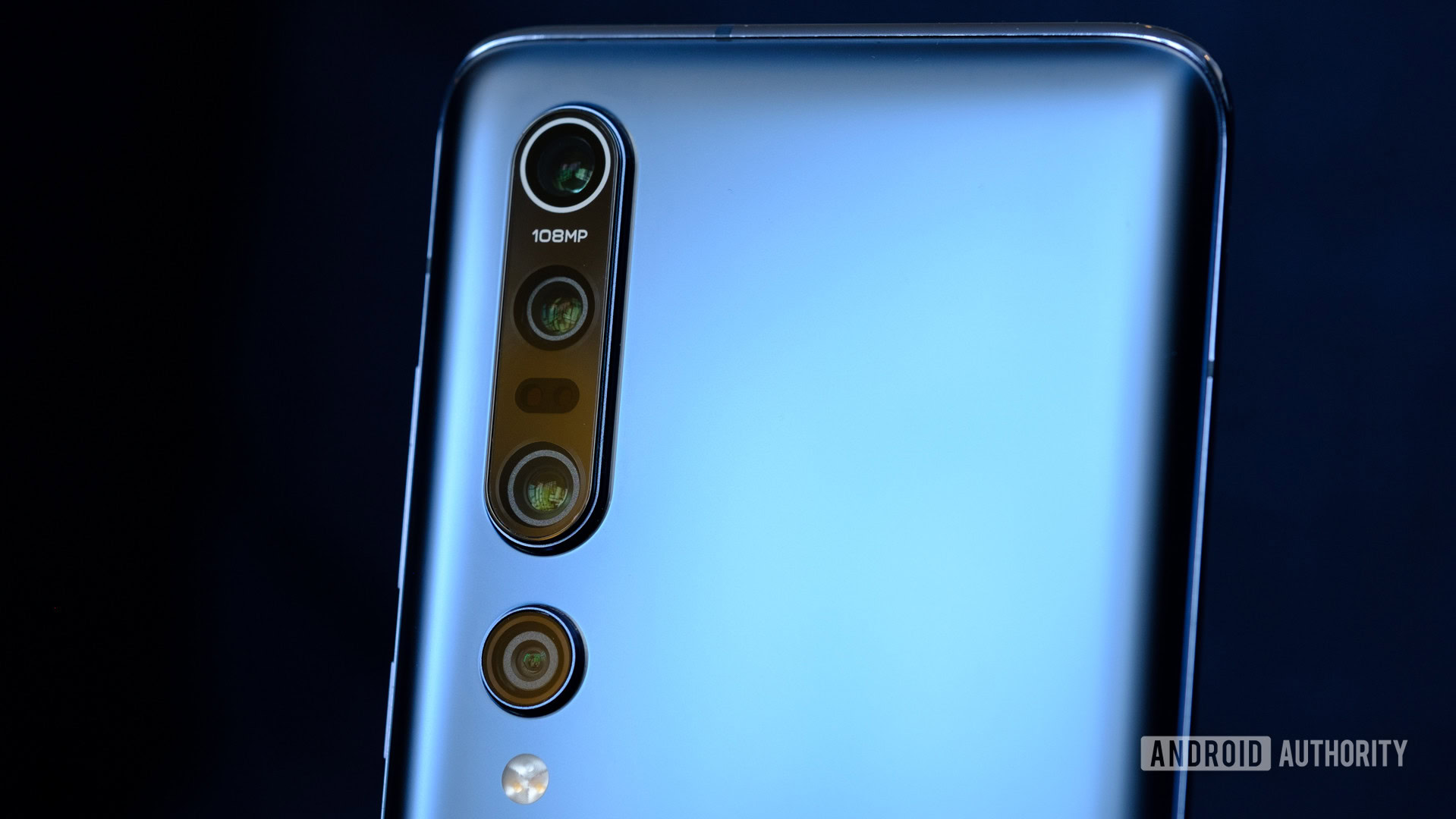
- Rear:
- Main: 108MP, f/1.69, 1/1.33-in sensor, 82-degree FoV
- Ultra-Wide: 20MP, f/2.2, 117-degree FoV
- Portrait: 12MP, f/2.0, 2x optical
- Zoom: 8MP, f/2.2, OIS, 10x hybrid, 50x digital zoom
- Front:
- Selfie: 20MP f/2.3, 1/3.4-in sensor
- Video:
- 8K@30fps, 4K@60fps, 1080p@60fps, 720p@240fps
Flagship phones are expected to have multi-camera arrays adorning the rear panel and the Xiaomi Mi 10 Pro is no different. This is among the more complicated arrangements I’ve seen, so let’s go through this step by step.
The top-most lens is highlighted and stenciled “108MP” but there’s a problem: it isn’t the 108MP camera. Instead, it’s an 8MP hybrid zoom lens. This is the lens that gives you your telephoto effects from 2x and beyond. Yeah, confusing, I know. The next lens down the stack is a 12MP shooter that handles portraiture. This “beauty” camera has a 50mm lens and is the primary shooter for bokeh shots. The third lens down the stack is actually the 108MP main camera. Last, the fourth lens that’s set off by itself does double duty as the 20MP ultra wide-angle and macro shooter.
Photos taken with the main lens are binned down to 25.2MP. Most shots turned out well. You’ll see sharp focus throughout, with solid exposure and color. My only complaint would be the poor HDR effect and the noise visible in dark spots. Switching to the full 108MP resolution delivers results that are on par with (and, in fact, almost indistinguishable from) the standard setting. You’ll see the color is identical, focus is spot on, and there’s very little noise. The real reason for such a sensor is so you can zoom way in, and when you do you’ll begin to see some digital artifacts and other flaws.
The zoom lens does a particularly impressive job. The shots I took at 1x, 3x, and 5x looked nearly identical in terms of sharpness and clarity. You can push the zoom all the way up to 50x if you want, but those results are as bad as you’d expect. Soft, grainy, and just not worth much. Any level of zoom up to about 10x, though, is quite good.
I was not entirely pleased with the ultra-wide/macro camera. It definitely had some exposure issues, as you can see in the dark spots in several of the river scenes. I’m not sure how useful the macro camera is, and setting up shots wasn’t particularly easy.

The mid-range portrait lens is perhaps the best of the bunch. It delivers optical zoom up to 2x, and the clarity is simply excellent. You can see this in the waterfall closeup. This result far supersedes what I was able to capture with the S20 Ultra and V60.
On front, you’ve got a 20MP selfie shooter. I was not entirely impressed with the self portraits. Edge detection is a little uneven, and the background is blurred so hard it makes me dizzy. Selfies taken without portrait mode are cleaner.

The Mi 10 Pro includes a wide variety of cinema modes if you’re feeling particularly creative. It has an AI assistance, for example, which will help with scene and exposure, as well as ShootSteady OIS/EIS for stabilization and Vlog Mode for YouTube and TikTok fanatics. It can handle super slow-motion up to 960fps.
Video capture runs up to 8K at 30fps. Without an 8K TV or monitor, we aren’t able to assess the quality of 8K video, but the results look good on the phone’s screen. The 4K @ 60fps footage looks great, as does the 1080p and 720p stuff. I can’t say that that AI mode did anything truly noticeable, but OIS is awesome for reducing shake and shimmy.
Sample photos have been resized for display purposes. Full-resolution samples are available here.
Xiaomi’s camera application is robust. It covers the basics and then some. In addition to a multitude of capture modes, the Pro option allows you to take control of every feature individually.
As a package, the phone’s camera is a little confusing. It’s not entirely clear which lens is taking a picture at any given moment. What does matter is that the pictures and video you capture with the Xiaomi Mi 10 Pro are good. They may not be Pixel 4 or P40 Pro good, but they are every bit flagship quality.
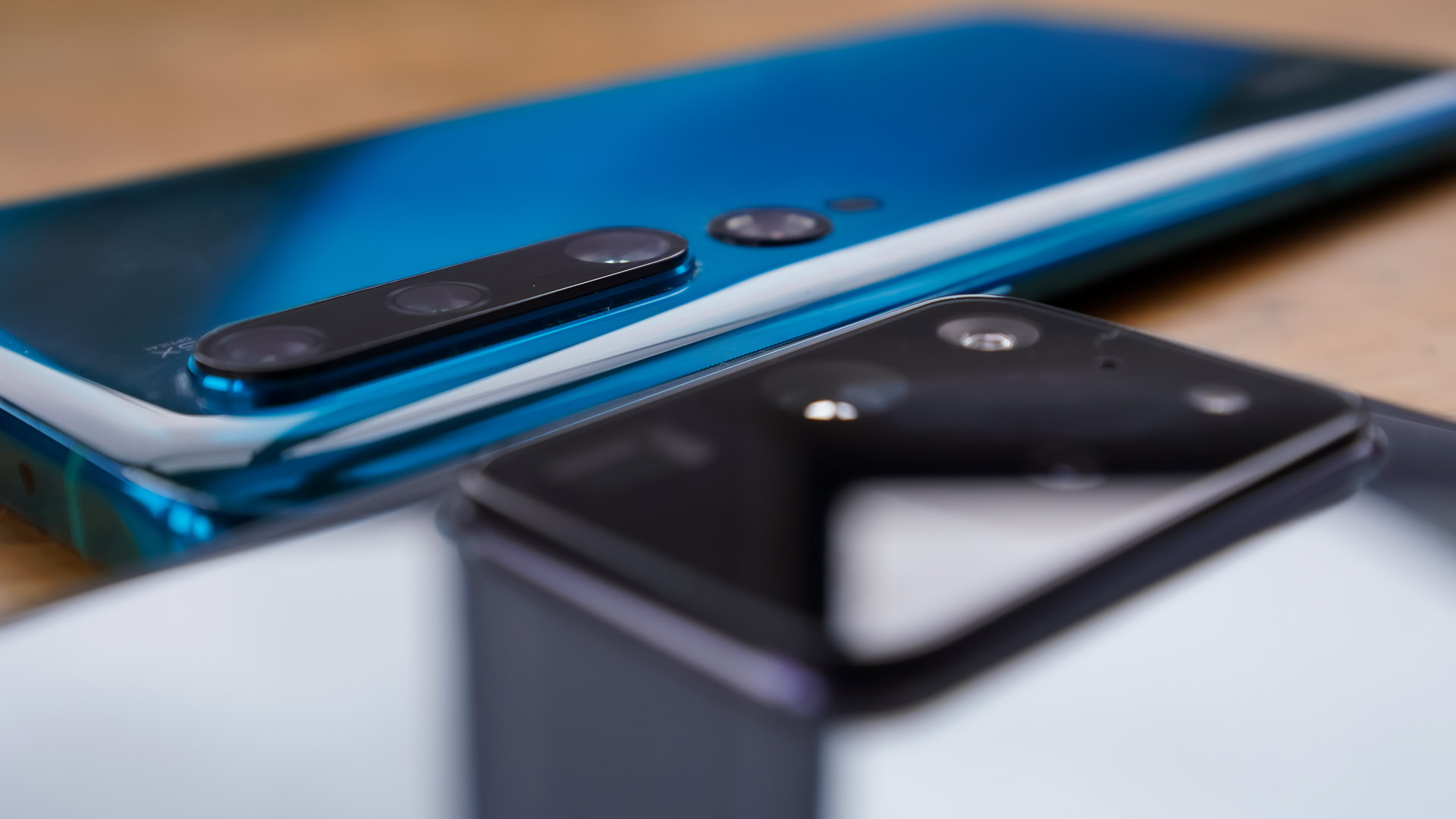
MIUI: Taking it to 11
The Xiaomi MI 10 Pro shipped with Android 10, the March 2020 security update, and Xiaomi’s UI, MIUI 11. The most notable aspect of the user interface is the lack of an app drawer. Xiaomi has offered an app drawer on older phones, but the option is sadly missing on the Mi 10 Pro. This is perhaps my biggest gripe with the phone. I detest using the home screens to house all the apps. Is this the end of the world? No. Does it irk me (and might it irk you?) Yes. You can use Nova launcher or similar and call it a day. But you shouldn’t have to.
Beyond the app drawer, the phone offers just about everything a modern Android user would want. You’ve got multiple themes, adjustable fonts, variable app grids, and such.
The real unknown here is how swiftly and consistently Xiaomi will update the security patches.
Unlike HUAWEI’s P40 Pro, the Mi 10 Pro has a full slate of Google apps, including the Google Play Store. This makes it a good alternative to the HUAWEI if you’re in a market where both phones are available.
The only real unknown here is how swiftly and consistently Xiaomi will update the security patches for the phone. Xiaomi does provide frequent software updates, but it tends to decouple its MIUI releases from major Android releases. In other words, MIUI might get a major update that doesn’t include Android 11. Otherwise, the software suite has all it needs — except an app drawer.
Extras
Audio: The speakers are fantastic. Rather than rely on the earpiece to assist in creating the stereo effect, Xiaomi installed a full speaker on each end of the phone. The drilled holes indicate where the speakers are. The seven-magnet arrays have a Hi-Rez Audio certification and deliver clear, loud sound. On its own the Mi 10 Pro is more than capable of filling your bedroom or living room with solid sound. LHDC and the aptX Adaptive codec are on board, which means you’ve got great options when it comes to Bluetooth.
IR blaster: In a callback to yesteryear, the Mi 10 Pro includes an IR blaster and the Peel remote app. Together, these allow you to control most any bit of home theater tech in your house. It was a breeze to set up my TV, Android TV box, and smart speakers. Nice.
NFC: An NFC radio is on board and it supports Google Pay. While it didn’t work on our review unit (due to unlocked bootloader), it should worm on retail units just fine.
5G: The phone will mostly be sold in Europe, where it has the proper LTE 4G and 5G band support. The Mi 10 Pro has limited wireless support in the US. It covers the basic LTE bands for AT&T and T-Mobile, but the newer, faster bands (66, 72) are not available. I didn’t run into any real trouble using the phone on T-Mobile’s network, but 4G was far from fast. As for 5G support, the Mi 10 Pro has the bare minimum sub-6GHz bands on board (n1, n3, n7, n28, n77, n78). I was not able to connect to T-Mobile’s 5G network, despite the network’s known availability at my home.
Xiaomi Mi 10 Pro specs
| Xiaomi Mi 10 Pro | |
|---|---|
Display | 6.67-in AMOLED DotDisplay with TrueColor 19.5:9 aspect ratio, 92.4% body/screen ratio 90Hz Full HD+ 800nits Under-display fingerprint reader |
Processor | Qualcomm Snapdragon 865 Adreno 650 GPU LiquidCool 2.0 vapor chamber |
Memory | 8GB LPDDR5 RAM |
Storage | 256 UFS 3.0 storage |
Battery | 4,500mAh 50W wired charging 30W wireless charging 65W charger in box |
Camera | Rear: Main: 108MP, f/1.69, 1/1.33-in sensor, 82-degree FoV Ultra-Wide: 20MP, f/2.2, 117-degree FoV Zoom 1: 12MP, f/2.0, 2x optical Zoom 2: 8MP, f/2.2, OIS, 10x hybrid, 50x digital zoom Front: Selfie: 20MP f/2.3, in-display, 1/3.4-in sensor Video: 8K @ 30fps, 4K @60fps, 1080p @60fps, 720p @ 120fps |
Dimensions | 162.58 x 74.8 x 8.96mm |
Weight | 208g |
Colors | Alipne White, Solstice Grey |
Value for Money

- Xiaomi Mi 10 Pro: 8GB RAM, 256GB storage — €999, £873, $1,099
Here’s where the story take a bit of a turn for Xiaomi. Last year’s Mi 9 Pro 5G cost closer to €500 / $520, or half the cost of the Mi 10 Pro. This is a dramatic and almost unprecedented break with the previous generation’s pricing. The change is even more confounding when you weigh the features of the Mi 9 Pro against the Mi 10 Pro, both of which have top-tier processors, rapid charging, powerful cameras, and quality hardware. What warrants the huge price jump? A few things.
First, the camera. The Mi 10 Pro jumps to a 108MP main camera that is aided by no fewer than three ancillary lenses for wide shots, telephoto, and portraits. Next, the display — which is always the priciest component of any smartphone — upgrades to a 90Hz panel. Last, though both phones support 5G, the Mi 10 Pro uses the Qualcomm Snapdragon 865, a 5G-enabled chip that’s so expensive it’s pushed the price of 5G phones up across the board.
I’m not sure if this makes the Mi 10 Pro worth twice as much as the Mi 9 Pro, but, sadly, it is in line with competing flagships. In other words, the value of the phone is on par with the S20, V60, Pixel 4, P40 Pro, and other 2020 flagships with similar feature sets.
You’re paying a premium price for a premium phone.
Xiaomi Mi 10 Pro review: Should you buy it?
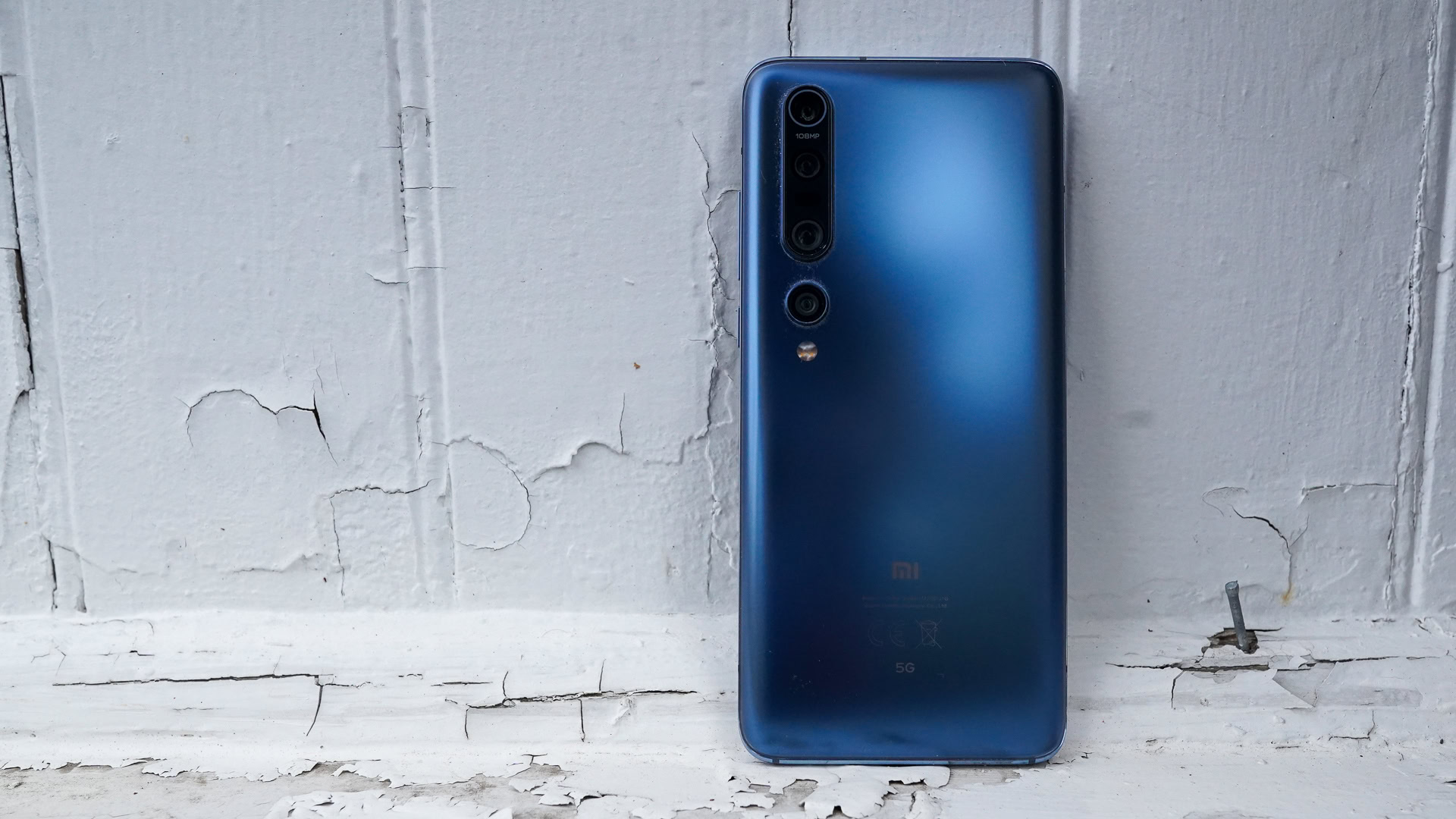
Xiaomi has some serious competition around the world. Phones such as the freshly announced OnePlus 8 Pro, as well as recent flagships such as the Samsung Galaxy S20, LG V60, HUAWEI P40 Pro, OPPO Find X2, and others are legit contenders with the Mi 10 Pro. Right now, the Mi 10 Pro is retailing for about $1,099 (€999, £879) from online retailers. That puts it directly in line with the cost of its direct competitors. So which do you choose?
If you want something more mainstream, stick to the Samsung or the LG. They’re available at carrier stores and big box retailers and are the safe purchase. The OPPO Find X2 and OnePlus 8 Pro are incredibly similar, and are perhaps the best devices to put head-to-head against the Xiaomi. For those living in China, the Xiaomi is probably on equal footing with the HUAWEI P40 Pro. Most of these phones go spec-for-spec with one another and often the only thing separating them is perhaps camera quality and battery life. You can’t go wrong with any of these devices. Xiaomi’s flagship doesn’t necessarily stand out from the crowd, but, perhaps for the first time, Xiaomi truly deserves a place among these titans.
The Xiaomi Mi 10 Pro is a wonderful phone that covers all the bases and then some.
All that said, the Xiaomi Mi 10 Pro is a wonderful phone that covers all the bases and then some. Xiaomi did a great job designing a classy piece of hardware that looks as good as it feels. The 90Hz display is outstanding, the nearly two-day battery life is ridiculous, and the speedy processor performance is palpable. Loud stereo speakers and an IR blaster ensure that you’re always entertained. One niggle might be the software, and particularly the lack of an app drawer. The 108MP camera system is very, very good, though perhaps just short of excellent.
The Xiaomi Mi 10 Pro is every bit a winner.
Thanks for reading the Android Authority Xiaomi Mi 10 Pro review.